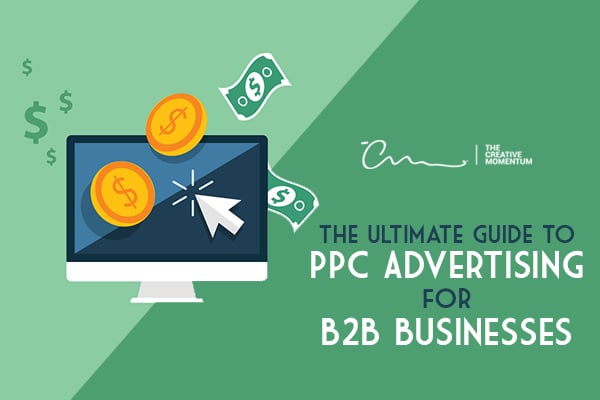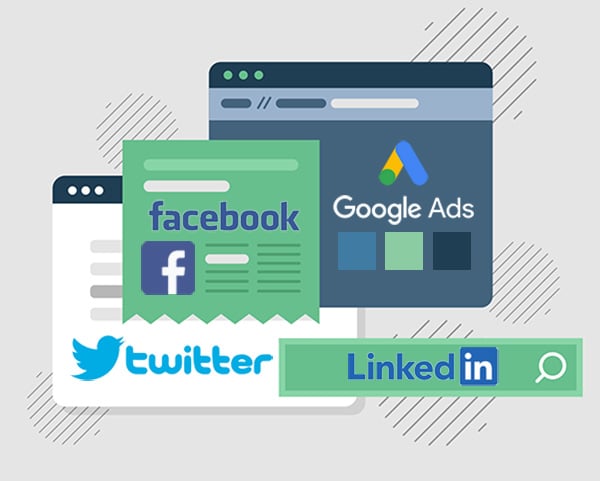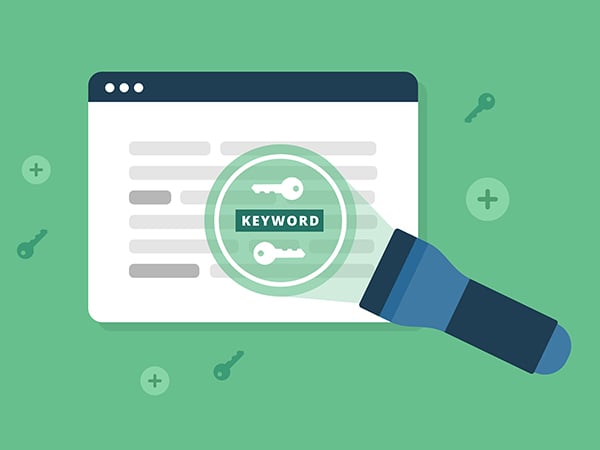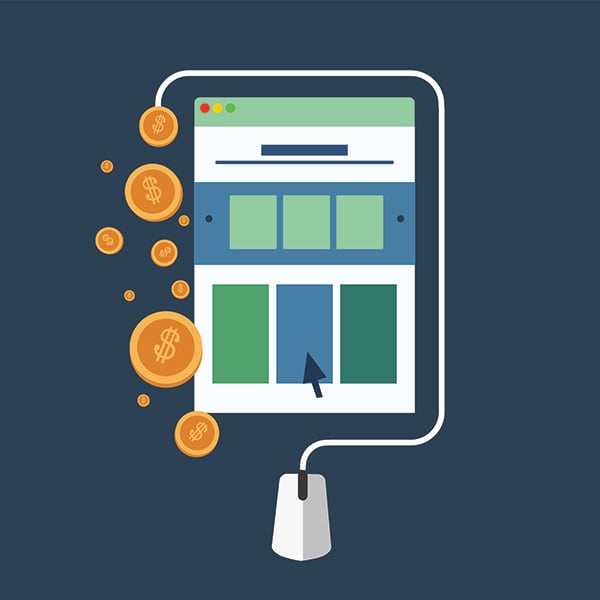
PPC, or “pay-per-click,” marketing is a form of online advertising from which the advertiser has the potential to make money when a user clicks on ads. Companies bid on the perceived value of a click for their business based on the keyword, platform, and audience.
In other words, in exchange for payment, search engines will push your content to the top of the results, and you pay them every time someone clicks your ad. Statistics show that PPC ads are among the top three generators of high-volume leads and website conversions, so it’s no wonder that the number of PPC ads on Google and Bing increases every year. In 2019, companies spent over $55 billion on PPC ads in the U.S. alone.
PPC marketing can help your business increase sales, generate leads, and even promote brand awareness. PPC lets you put short, specific ads in front of search engine users to help motivate them to visit your site.
Does PPC Really Work?
It really does! Using PPC, your company enhanced your marketing and sales strategies. Think about this: In the past, you may have spent a substantial amount of time and money attending tradeshows, collecting leads, cold calling, etc. to get your products or service in front of your target audience. With PPC, a simple ad can accomplish the same thing. It’s less aggressive and a much more effective inbound marketing strategy.
PPC is all about relevance and ease to the consumer. At any given time, consumers are surfing the web, looking for products, services, or information. Using PPC, you can now drop a targeted ad in front of consumers when they're searching for those exact (or similar) products or services.
What are the Best Platforms for PPC?

There are four main platform we recommend for PPC campaigns:
- Google Ads runs on Google, Search Partner sites, and Display Network sites and is the largest PPC platform. It was launched in October 2000 and is geared toward all companies from small B2Bs to Fortune 500 companies.
- LinkedIn is a great platform for PPC because of its unique insight on user job titles, industries, and companies that's useful for ad targeting. They display ads across search results pages, groups, inboxes, and profile pages.
- Facebook PPC offers significant reach to a global audience of over 1 billion users, complete with a variety of ad types and placement strategies for full PPC customization.
- Twitter Ads let marketers connect with the platform's highly segmented user base, complete with tools for campaign support, bidding management, and more.
What Type of PPC Campaigns Should You Use?
There are four basic types of PPC campaigns:
- Search Network: This is the most common targeting option. The Search Network consists of Google and Google’s Search Partners like AOL.com, Amazon.com, etc. The Search Network is keyword-based advertising. In other words, searchers type in keywords, and ads including those words show up.
- Display Network: This network consists of millions of sites that agree to show Google text, image, and video ads. These ads are shown within the site’s content based on audiences and demographics. For example, a user may visit a blog about the history of refrigerators. Even though the user isn’t necessarily wanting to buy, if there's a display network advertisement for a refrigerator, he/she is now aware of the brand.
- Search Network with Display Opt-In: This targeting option is a combination of both networks. Now you’ll create a regular Search Network campaign and opt in to the Display Network. In this campaign, Google determines when and where ads may perform best. So you'll need to be comfortable giving up some control if you choose this option.
- Shopping: Product Listing Ads: PLAs are shown on Google and Microsoft. After submitting a product feed to Google Merchant Center, shopping campaigns can be created in Google Ads. Advertisers create product groups to which they can bid on various feed attributes.
Okay, so where do we go from here?
It’s All About the Keywords

As we mentioned when we discussed Pay Per Click Campaign Strategy, PPC may sound simple enough, but with the millions of other businesses buying ads, it takes some strategy to stand out. And that strategy comes in the form of keywords.
- Brand terms: keywords that include your brand name or any terms you’ve trademarked. This is more important than you might think because a common keyword strategy is to bid on searches of the competition's brand name (see fourth bullet).
- Generic terms: anything that relates to your product or service.
- Related terms: words that aren't directly related to your product or service but might be included in a search. For example, "how to run faster" might be a good, related keyword if you manage a PPC campaign for athletic shoes.
- Competitor terms: the brand names of your competitors who offer similar products or services. This will direct visitors away from their page to yours.
- Use keyword research tools, including Google Ads Keyword Planner: These tools provide search volume estimates and help assess the value of a keyword.
- Check out what keywords your competitors are using: Sometimes, looking outside can offer up a fresh perspective. Don't know how to search competitor keywords? Check out our article on how to research and analyze competitor's keywords here.
Keyword Match Types
A lot goes into selecting and refining keywords. Every keyword you choose must be assigned a match type. The match type defines the queries for which the ads will show. There are seven types:
- Exact: keyword searched must be an exact match.
- Exact (Close Variant): keyword must be typed in exactly but can include misspellings or other variants. For example, “shooes” instead of “shoes.”
- Phrase: the sequence of keywords must be typed in a certain order, even if there are additional terms before or after the word.
- Phrase (Close Variant): the sequence of keywords must be typed in a certain order, even if there are additional terms before or after the word. Keyword can include misspellings or other variants.
- Broad: keyword can be typed in any order and will potentially show ads for similar searches.
- Modified Broad: keyword can be typed in any order but must include terms that contain a plus sign.
- Broad (Session-Based): a form of broad match that takes into account other keywords from that user’s search session.
What About Structure?
Once you have a strong list of keywords, it’s time to focus on the structure of your ad campaign. Let’s use Google Ads as our platform example. In Google Ads, you have an account hierarchy.
- Account
- Ad campaigns
- Ad groups
- Keywords
The account is your business. The next level is ad campaigns. Campaigns are further broken down into ad groups that target search terms. Keep in mind that when you create your PPC campaign and ad groups, you’ll have to supply the following to Google:
- Budget: how much you’re willing to spend each day on your ads.
- Audience: who your company wants to target with your ads.
- Landing page: where users who click on your ads are directed.
- Bid: how much you’re willing to pay for someone to click on your ad.
How Do I Bid?
PPC advertising is auctioned to bidders based on parameters that include the ad’s relevancy, ad format, and the bids themselves. When you set up your PPC campaigns through Google Ads, you’ll be asked how much you’re willing to pay whenever someone clicks on your ad. Keep in mind, if you bid 20¢ per click and your competitor bids 50¢ per click, they’ might rank higher for that keyword.
We say may because Google doesn't decide which ad to place highest based on bid price alone, they base it on your quality score. Check out this article if you want to learn "What is Google Ads Quality Score?"
Unfortunately, you can’t see your competitors’ bids. Just do your best based on your budget and the amount of competition for a keyword.
It’s Time for Ad Copy and Creative

So yes, keywords are “key.” However, your ad copy has to be good. It must be compelling. Just like any form of advertising, if your ad isn’t attractive, or if it doesn’t draw the user in, it’s useless. Pay attention to your headlines and your descriptions.
Again, put yourself in the minds of your customers. What do they want? What are they looking for? What will make their lives easier? Think about the following:
- Benefits: Make sure your customers know how your product will benefit them.
- Promotions: Include any sales or promotions you’re currently running on your products.
- CTA: Include a definitive call to action for users.
- Pain points: Personalize your copy to your customers’ needs. What pain points will your product address?
- Testimonials: Include statements of proof from customers to build trust.
Here are Google Ads current ad structure and character limits:
- Headline 1: Up to 30 characters (including spaces)
- Headline 2: Up to 30 characters (including spaces)
- Description Line: Up to 80 characters (including spaces)
- Path 1: Up to 15 characters
- Path 2: Up to 15 characters
Also, don’t forget images! Make sure your product images are attractive.
Match Your Landing Page Content to Your PPC Content
Now that we’ve talked about the ad side of your PPC campaign, we definitely need to talk about your landing pages. This is where users will land when they click on your PPC ad. The key to a successful landing page and successful PPC campaign is to have your landing page build off of your ad copy.
Think about the benefits, promotions, and pain points you used in your ad, then expand on them on your landing page. Give your customers even more of what they’re looking for. If you’ve promised them a promotion, make sure you follow through with it on your landing page.
You can absolutely use an existing website page as your landing page. However, PPC campaigns are far more successful when they designing a landing page specifically for an ad. Regardless of what you decide, make sure your landing page is fast, intuitive, and responsive for users especially as it relates to the content of the ad.
Go for Launch!

So, you have your keywords, you’ve structured your ad, you’ve written and designed your ad, and your landing page is great. What’s next? It’s time to go live!
But remember not to sit back and wait. You want to measure your results and monitor your performance. If your ad isn’t doing as well as you expected, you now tweak it to see what works better.
PPC campaigns come with a huge amount of data to track. Fortunately, there are plenty of tools to help you see how your campaign is doing.
- Monitoring Tools: These tools help you keep a finger on the pulse of your PPC campaign. They can show you how your ads rank, their performance, and where they stand against the competition. Use them to keep an eye on your PPC campaigns:
- WordStream PPC Advisor automatically analyzes your current PPC campaigns and offers helpful suggestions for improvement.
- Optmyzr: For larger companies with bigger budgets, this tool can manage multiple PPC campaigns and includes many automated features to help save time. Think of it like WordStream but in bulk.
- Google Ads Editor: This app is free for Google Ads advertisers and can help you manage and track analytics for your PPC campaigns. It doesn’t have many of the automation features of the other monitoring tools, but it’s great for smaller advertisers who are just getting started with Google PPC ads.
Are You Ready to Start a Successful PPC Campaign?
Starting and managing an effective PPC campaign involves a fairly substantial list of to-do’s. If you need help, our team at The Creative Momentum creates effective campaigns that deliver strong results for our clients. The business owners we work with also appreciate that we focus on what we’re good at while they have the priceless opportunity to do the same at their respective companies. Are you ready to get the most bang for your buck on Google Ads?


